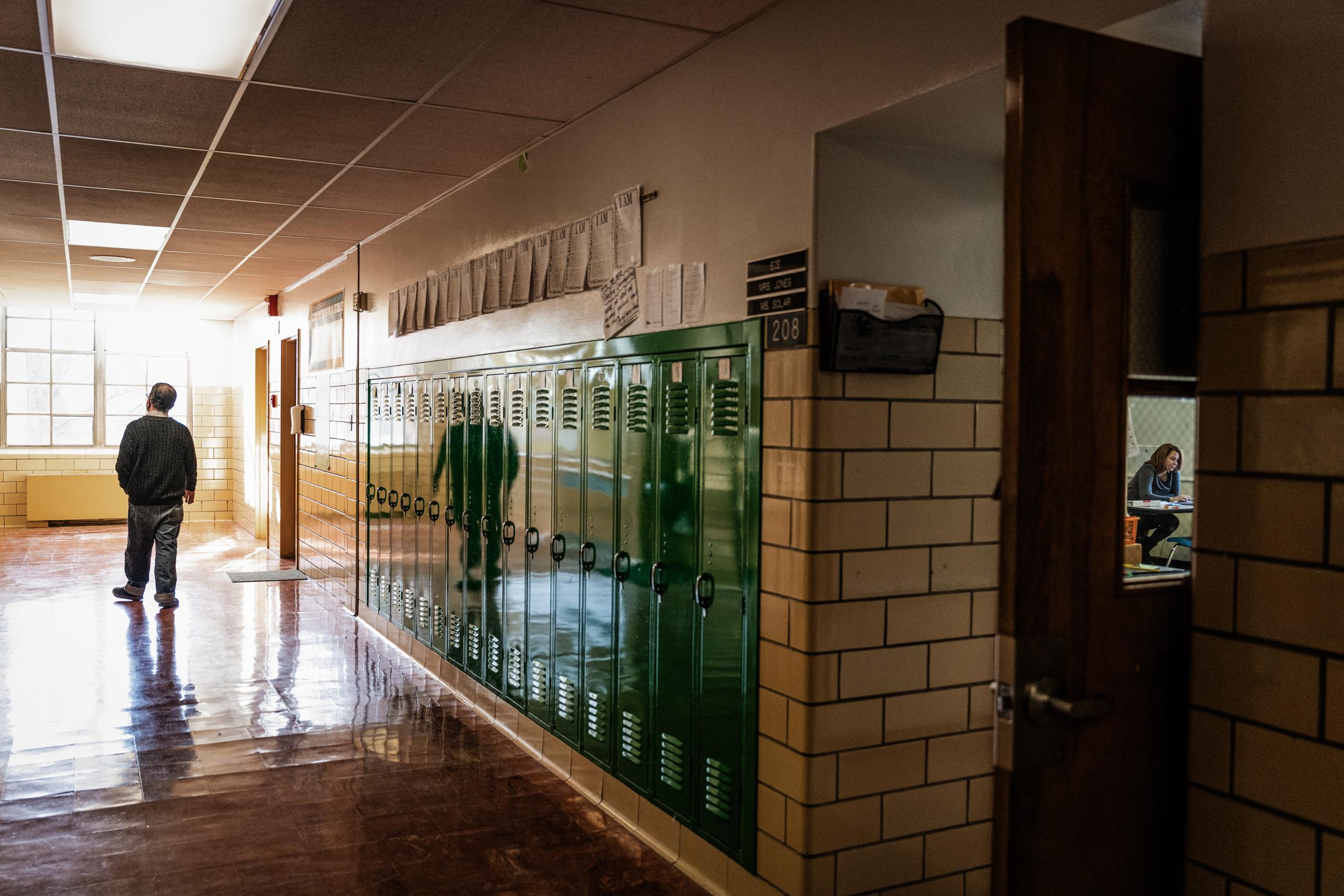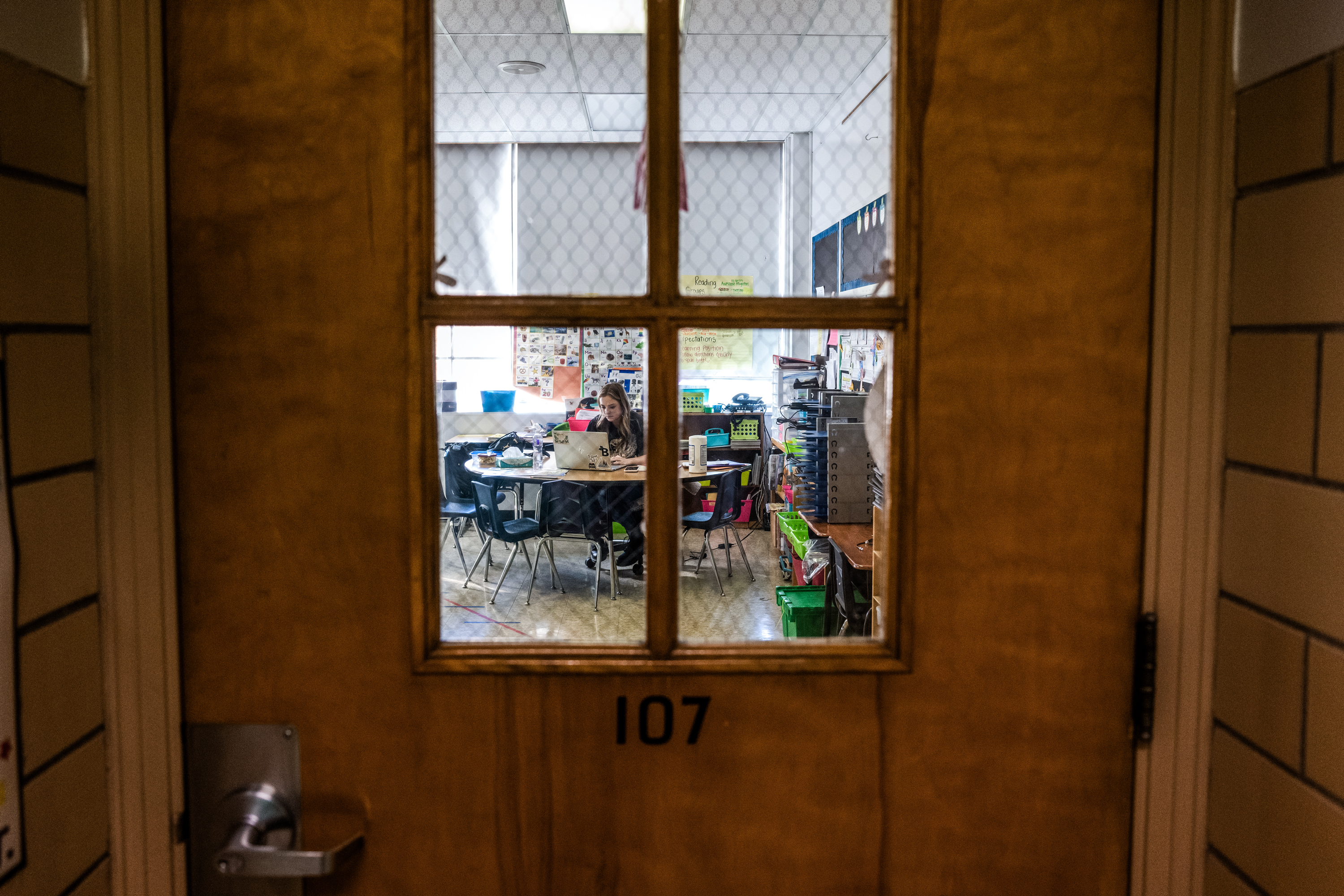Rhyen Staley left teaching in 2021 after 12 years on the job.
He began in Illinois and ended at a Tennessee middle school, where he was making about $60,000 a year. A typical class involved about 10 minutes of instruction, he said, “and the rest of the time putting out behavioral fires.”
On two occasions, students threw scissors at Staley’s head. One male student pushed a classmate through a glass window, stabbed a teacher with a pencil, and made death threats against a sixth grade girl. The boy was issued in-school suspension, but administrators never considered stronger sanctions because he had a learning disability and the school feared civil rights implications, Staley said.
“It was such a hot mess there,” he told The Epoch Times.
The district follows a restorative justice policy that discourages suspending disruptive students for nonviolent incidents.
Instead, those children are required to have private conversations with school counselors. Staley said it reached a point at which students in his class purposely walked out of the room and slammed the door because they favored meeting with a counselor over completing classwork.
“It got to the point where teachers were saying, ‘Let’s just do social-emotional learning instead of math and reading,’” Staley said.
Widespread Problem
The study was based on responses from 1,479 teachers across the nation. Among the teachers surveyed, 17 percent said they intended to leave their profession entirely.
The Rand report said that student behavior was the most common reason for teacher stress, followed by low pay.
The third reason was the abundance of paperwork, evaluations, and other administrative tasks. The study listed the average base salary for teachers as $70,464.
In New York City, the nation’s largest school district, the average number of applications per teaching vacancy for specialties such as math, foreign languages, the sciences, and special education is less than two.

The teacher shortage is a major problem across the country in districts large and small.

Low pay for public school jobs has long been cited as a primary reason for the teacher shortage.
During a Senate committee hearing in June, legislators on both sides of the aisle said $60,000 is a reasonable minimum wage for full-time certified teachers in every state, a significant increase from the median starting salary of less than $40,000.
Student Behavior
Recruiting teachers and retaining teachers are two different challenges.The Epoch Times’ analysis of recent teacher surveys, coupled with interviews with former and current teachers, suggests that low pay is not the primary reason for teacher burnout.
Amy Grady, a fourth grade teacher in Mason County, West Virginia, said she is astounded by the behavior of students these days compared with when she attended the same district in the 1980s and ‘90s.
A 6-year-old at her school recently tossed a chair through a window in a violent outburst, she said.
“What other profession can you be kicked, punched, sworn at, and expected to keep doing your job?” Grady told the Epoch Times on Sept. 3. “Teachers feel like they should have a say with how their classroom is managed.”
Grady recalled that in her time as a student in the district, most disciplinary problems were resolved in a matter of hours, and parents were more apt to communicate with their children about school every day.
Still, she said, Mason County has been hit hard by generational poverty and drug addiction. Many children are in foster care or are being raised by grandparents. Social media and excessive screen time exacerbate existing issues.
Grady said she still loves teaching but has seen many peers over the years leave the profession well before retirement age.
“We give 100 percent every day and still feel like we can’t make the difference we should be making,” she said, emphasizing that most teachers knew ahead of time that education is not a lucrative profession. “Some end up deciding later that the low pay wasn’t worth it.”

Like many other teachers in her area, Grady works a second job.
She’s also a state senator, which is considered part time, pays less than $10,000 a year, and requires her to take an annual leave of absence to attend the legislative session over the winter months. Much of her work as a West Virginia lawmaker is related to education, including her Teacher Bill of Rights bill that establishes a disciplinary process for temporarily removing disruptive students in K–5 classrooms. A law for the older grades is already in effect.
“When one kid is disruptive or violent, that takes the focus away from the other kids,” Grady said. “That’s got to change.”
Difficult Work Environment
Merrimack College and the nonprofit organization EdWeek Research Center have studied teacher morale for three consecutive years.According to the report, 58 percent of public school teachers said working in a classroom had a negative effect on their mental health and wellness.
The report quoted a teacher from California who said one student often talked about killing his parents and drew pictures of bloody knives and victims.
“I went home crying every day,” the teacher, who remained anonymous, said in the report. “I am the main breadwinner and provider of insurance. I cannot afford to quit. I considered suicide that year.”
A teacher from Pennsylvania told researchers that they think it’s unfair that parents and society as a whole view teachers as “a solution for everything.”

Some Movement at State Level
In recent years, some state governments have acknowledged issues related to teacher burnout.Florida, Alabama, and Louisiana have a teacher’s bill of rights similar to West Virginia’s legislation that requires school administrators to support a teacher’s decision to remove a child from a classroom if there’s pushback from parents.
In New York, a new law allows school districts to remove student standardized test scores as a metric for evaluating and sanctioning teachers. New Jersey and Michigan are looking into a similar initiative aimed at improving teacher morale.
In Oklahoma, school districts and state officials must stabilize the public school workforce before they can address teacher morale. The massive number of teacher vacancies at the start of the 2022–23 school year prompted the state education department to ease requirements. School employees with nonteaching degrees can head classrooms, and adjuncts without any college degree can teach up to five days a week.
A major shortage of substitute teachers also persists. John Waldron, a former history teacher in the Tulsa school district who now serves as a Democratic state senator, said teaching in his state is viewed as a $35,000 to $40,000 temporary gig—not a job or career.
He said the situation is a downward spiral because career-minded teachers get frustrated with their less-educated or poorly trained peers and leave the profession, taking with them valuable institutional knowledge and tools of the trade that could have been shared.
The remaining teachers, whether career or gig, Waldron said, will get burned out unless some of the pressure to improve test scores and strictly adhere to the approved curriculum is relieved.
Waldron said he hopes Oklahoma education has reached a low point, from which things can only get better. He said he’s encouraged by the bipartisan support to improve teacher pay and the use of technology and contractors to help with grading and other clerical and administrative tasks that have been a burden on teachers.
He implores school districts dealing with teacher burnout and shortages to learn from each other’s mistakes.
“We’ve given teachers less and less room to make the classroom an individualized learning space,” he told The Epoch Times. “It’s time to restore agency to teachers and give them the freedom to do their thing.”
















